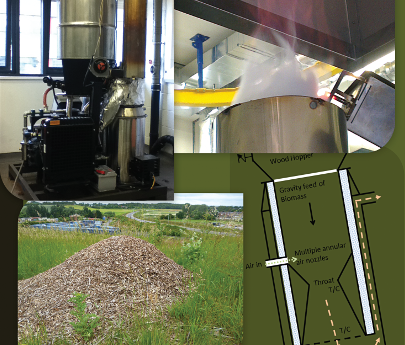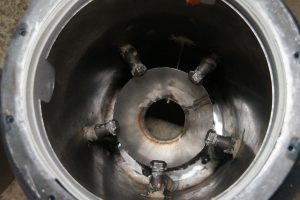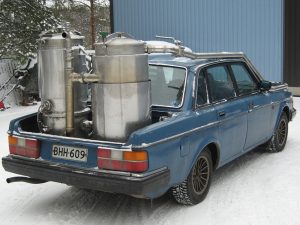Lowimpact.org has a new publication, and as far as we know, it’s a first – a book about using gasification technology on a small-scale. If you have access to woody biomass waste, this technology could be for you. It’s full-colour, 170 pages, and it’s available here.
Here’s what a small-scale gasifier looks like:

A small-scale gasifier can provide electricity and motive power on demand using garden prunings and wood scraps. The technology, based on the principles of charcoal production, flourished 100 years ago until oil became cheap. Energy engineer Dr Andrew Rollinson explores the science, history, and potential of small-scale gasifiers, and provides instructions on how to operate one successfully. With dwindling fossil fuel reserves, increased energy prices, climate change and mountains of waste, this book provides a helping hand. It will be relevant to those who want to assess whether the technology is right for them, but also serves as a guide for the gasifier operator, explaining what can go wrong, why, and how to achieve long-term success.

Author Andrew Rollinson writes in the preface:
Small biomass gasifiers were used extensively prior to and during the Second World War. Europe was prominent in gasifier development and the British government advocated the use of the technology in their colonies. It may then seem perplexing as to why, one hundred years later, the same country’s Renewable Energy Roadmap describes gasification as “in development”, and that their 2012 Bioenergy Strategy, refers to it as an “advanced technology”. Both of these documents are firmly focussed on large scale centralised power generation; but, agendas aside, the fact is that the biomass gasification landscape with respect to performance is presently very cloudy, not just in Britain, but all over the world. Compared to other small-scale renewable technologies, gasifiers are currently much less well defined in public knowledge.
A cursory read around the subject may reveal that gasification is a crude contrivance which has little left to disclose. Look a bit deeper and a very odd picture appears of a technology that is acclaimed by some as being the answer to all future waste problems, while there are others who believe that gasification has inherent problems and should be avoided. For those considering buying, investing in, or simply trying to understand the merits of any small gasifier, the answers are very hard to find indeed. The interested party will encounter commercial information in which are extolled the virtues of some proprietary gasification system and concept, while at the same time there seems to be a complete dearth of proof. The astute reader may then perceive the question, “if gasifiers work, where are they all?” Yet, no one would argue against the well documented one hundred year history of gasifier application.
One of the problems at present is that the truth about gasifier performance and the amount of care needed to get successful operation is not made fully transparent by system retailers, or subsidiaries in the supply chain.
Hopefully this book will put that right. Here are the contents:




